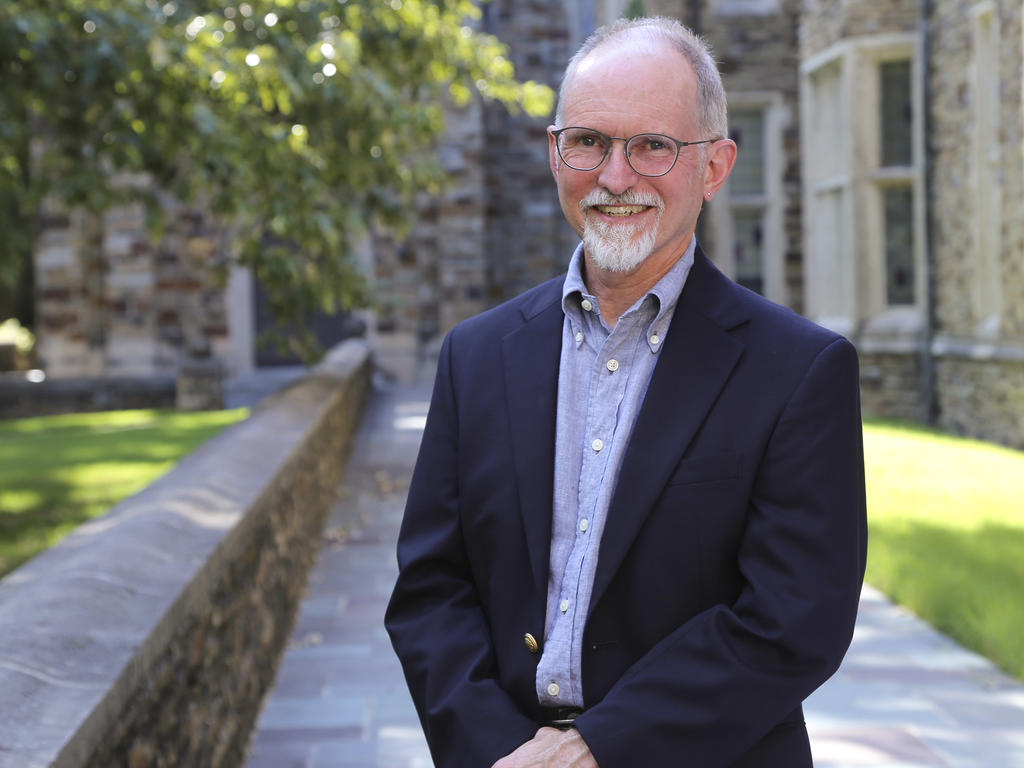David McCarthy, art historian and current head of the Department of Art & Art History, is a beloved professor at Rhodes who teaches a slew of art history courses— including American, modern, antiwar, contemporary, and feminist art — that benefit art and non-art majors alike. McCarthy makes the case that all individuals need to develop the skills of visual acuity.
“We’re visually communicating day in and day out, such as in the way we choose our clothing, but there’s this tendency toward passivity with works of art and visual representations in media,” he says. “Like with critical reading, we should be asking the really big questions: What’s not there? Who’s been left out? Whose voice has been suppressed?”
In his courses, McCarthy not only tries to enhance students’ knowledge of the major artists and works of a period, but he also emphasizes how works of art are integrated within the broader social and intellectual history of that period. He is a practitioner of the Rhodes Vision, which encourages students to pursue a lifelong passion for learning.
Says McCarthy, “I have to remain a student in my own craft, even as a teacher, to understand that I have to change and reinvent and be willing to hear my students and learn from them when they have things that they are uniquely suited to teach me. And there’s everything right with that.”
McCarthy has been a member of the Rhodes faculty since 1991, and over the years has brought his students into his own research. A project in 2000 with the Memphis Brooks Museum of Art—10 Pop Artists on Paper— involved 13 of McCarthy’s students researching original works of art, working alongside museum professionals, interviewing internationally known artists, and writing essays for publication.
“I also worked with a group of students to provide the research for an exhibition of work done largely by Black photographers of Memphis, and it was in conjunction with the Brooks Museum,” he says. “We had an exhibition which was partly at the college and partly at the Brooks, which had the lead on designing and ultimately publishing the catalogue.”
In 2004, McCarthy received the Clarence Day Award for Outstanding Research and Creative Activity presented by the college. That year, he also became a Senior Fellow at the Smithsonian American Art Museum.
Where has McCarthy’s work been published? “Sometimes in books, sometimes in exhibition catalogues, and other times in peer reviewed journals,” he says. “There’s still that sense of challenge and uncertainty every time I start a new project,” he says. “I have to be open to what other people have to say about my work.”
With a librarian for a mother and a clinical psychologist and university professor for a father, McCarthy grew up reading and discussing history and current events. He majored in art at Gettysburg College, which allowed him to also study not only art history, but also studio art, especially sculpture. “Part of it comes down to the admiration I have for people who are good with their hands. Civilization wouldn’t exist without the skill of a hand, and that could be as fundamental as plumbing or as well constructed as a sculpture by H.C. Westermann.”
Much of McCarthy’s work investigates H. C. Westermann’s commentary on militarism and materialism through art and how American artists have responded to and depicted the causes and effects of war in their art. The revival of political art in the late 1960s is one of McCarthy’s popular course topics.
“I’ve always seen art as a way by which humans make sense of where they are and who they are in a given moment, and a work of art provides us a portal to times and places,” says McCarthy. “It’s been interesting in my lifetime to see more people using art to talk about themselves, their community, their world view, and then lobbying rightfully for greater inclusion in shared spaces. And we all benefit from that.”
By Meg Jerit ’20
